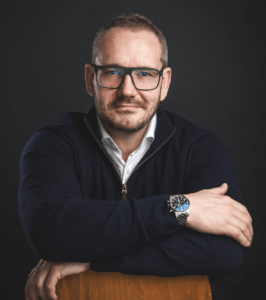The more the better! Or is it less more?
We all know the saying, but apparently we haven't quite internalized this approach as much as we think. A recently published study shows that we prefer to solve problems by adding something rather than taking something away. What does that say about us? How does it affect our problem-solving strategy, and what can we take away from these study results for ourselves?
The study:
The American research team around Gabrielle S. Adams published the study "People systematically overlook subtractive changes" (1) in April 2021. Behind this vague title are 8 experiments with a total of over 1500 participants and follow-up studies in which the team investigated how people solve problems in different settings. The problems or settings were set up in such a way that an improvement or solution could be achieved either by adding or taking away components. How can you think of this? For example, the task was to make a pattern symmetrical, which could be done by either removing the asymmetrical boxes on one side or adding the mirrored asymmetrical boxes on the other side. Through such simple tasks with different frameworks, clear preferences for action emerge:
Generally, we tend to solve problems additively, meaning we add something to make it better. This is independent of whether the subtractive solution (taking something away) is better or equivalent. However, if it is specifically mentioned that it is possible to add or take away something, then we significantly more often choose a subtractive solution, that is, taking something away. For example, without a hint 41% of the participants choose the (better) subtractive tactic, whereas with a hint 61% choose the (better) subtractive tactic.
Another experiment was only about improving something (Creative Project- Redesign), there was no right solution. Participants were asked to list up to 24 possible improvements. Without a hint (reduction was also possible) 28% mentioned at least 1 possibility of subtraction, with the hint this was the case for 43%.
All this shows that we automatically associate improving and optimizing with adding more and more. Are these associations shaped this way from childhood? Also, repeated viewing of a problem significantly increases the chance of choosing the (better) subtractive tactic than the (worse) additive one: less than half (49%) choose the subtractive problem solution when viewed once. However, if 3 similar tasks were solved before, participants become aware of the disadvantages of the additive approach and in the end 63% choose a subtractive method.
Finally, the team tested which decisions are made under cognitive overload and clearly found that with divided attention, the (better) subtractive solution is chosen less often. But: Subtractive, additive, these are laboratory parameters, surely this is not how I solve problems in everyday life? Or do I?
How do we often manage our health? Don't we prefer to take medication or supplements rather than perhaps remove something unhealthy from our daily routine, or from our diet? For example, to reduce stress?
When we are not feeling well, don't we often tend to buy ourselves something? In other words, to reward ourselves or, better, to compensate for the unpleasant feeling with something material?
When our home is overflowing with clutter, don't we usually think about needing more storage space instead of whether we might be able to reduce our possessions?
Or our approach to work and stress? We try to organize better with clever todo lists, calendar apps, etc., hire helpers, and try to keep increasing sales figures. Why not just vigorously cut tasks and appointments and work qualitatively rather than quantitatively. Don't fill every timeslot with an appointment, but simply "let your mind wander".
And how do we solve the climate crisis? We hope for innovations, more sustainable cars, solar airplanes, new more sustainable energy sources, lab meat and and and. But how about a subtractive approach to solving it? Less consumption, for example.
Well, there seem to be enough places where we like to lean towards additive solutions instead of considering subtractive approaches. Sure, the additive solution is not necessarily the better one. But how are we going to make a well-informed decision if we don't even recognize all the options and overlook the subtractive possibilities?
What can we learn from the study?
The results clearly show when we may very well consider a subtractive solution: When we are told that there might be one, we are reminded that it can't just be more. We also find it easier to recognize the solution to a problem when we are not cognitively overwhelmed - keyword multitasking. And lastly, it helps us if we look at a problem more often and think about it longer.
In other words, list the options for yourself, work on only one topic at a time, take your time in problem solving, and reflect more often in peace. In this way, we will certainly arrive at successful decisions more often.
Let's cut to the chase:
1. take your time to make your decision, so you may see alternative solutions
2. remind yourself and those around you that there are always multiple options to solve a problem.
3. try not to find solutions during cognitive overload and don't give in to the fairy tale of multitasking. Focus on one task at a time.
Sources
1 Adams GS, Converse BA, Hales AH, Klotz LE. People systematically overlook subtractive changes. Nature. April 8, 2021;592(7853):258-61.

